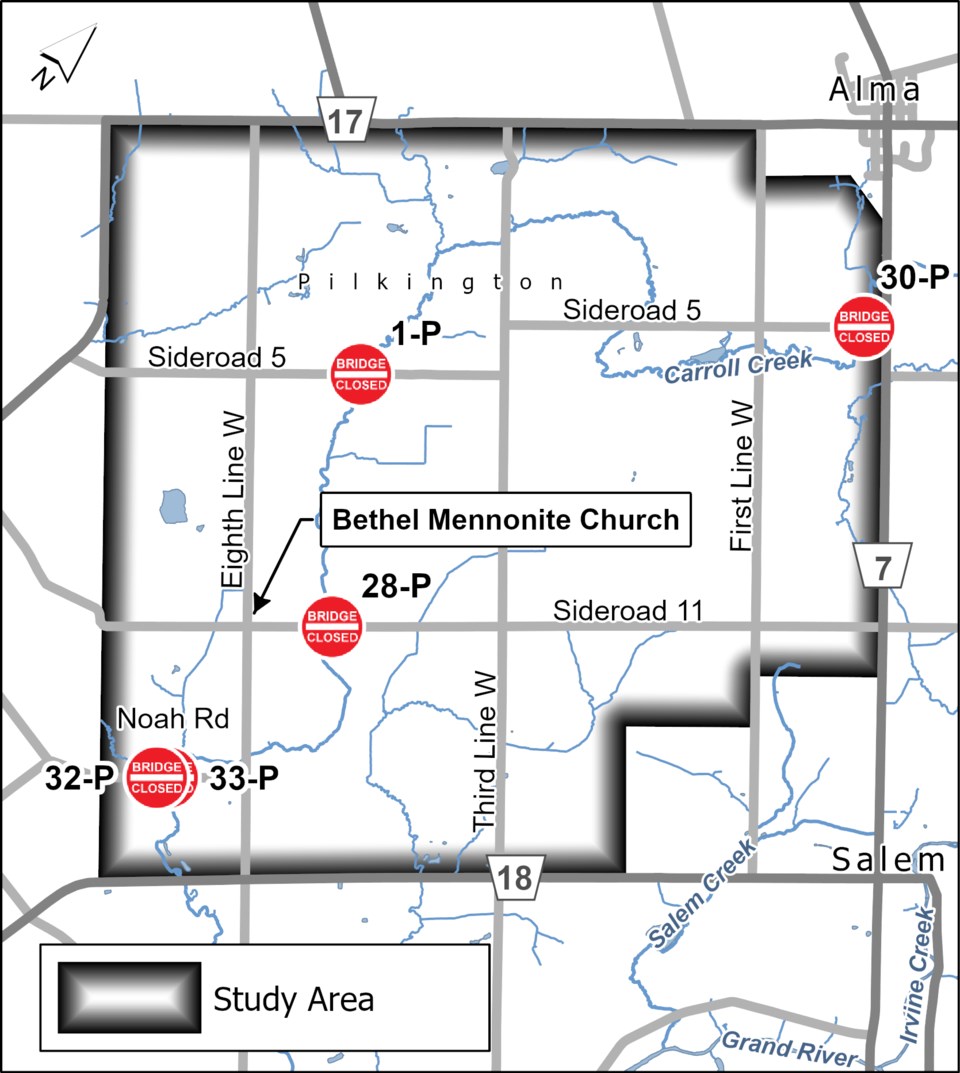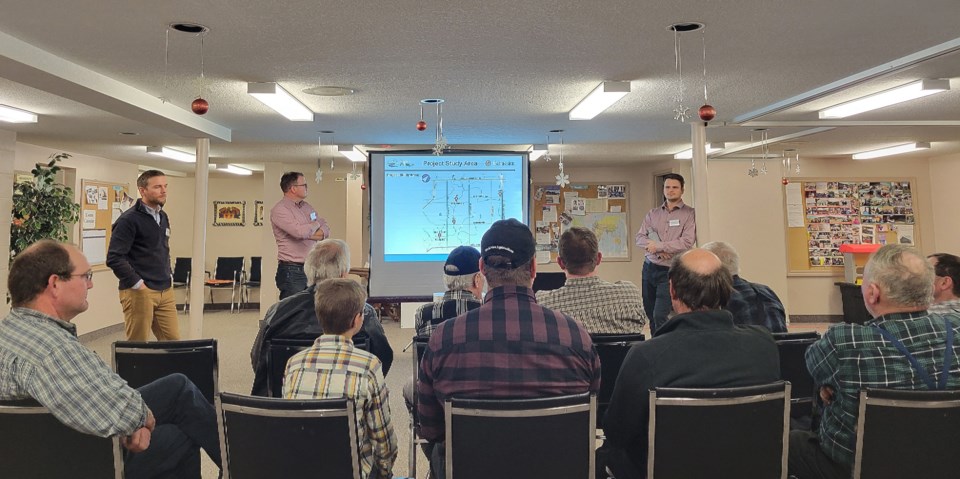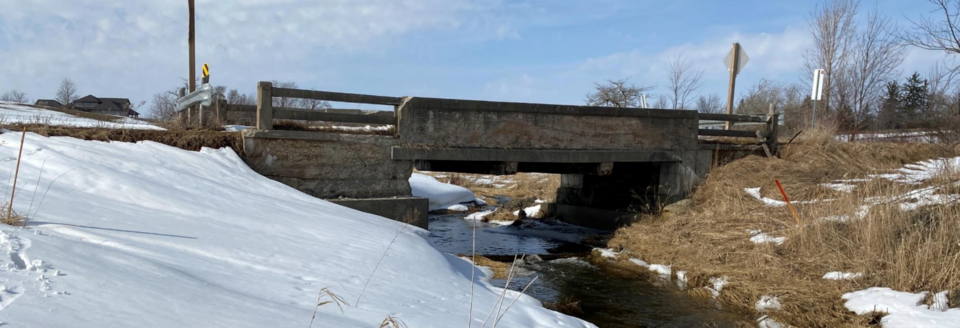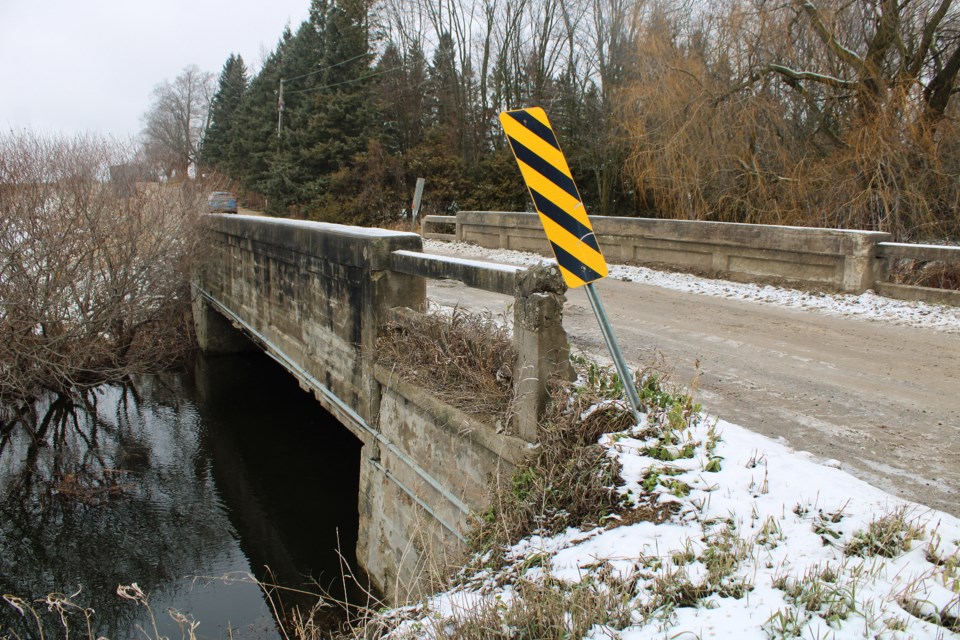It’s a cold, quiet night as a small group of community members, mainly consisting of men in flannel shirts, gather at a Mennonite church on Centre Wellington's Eighth Line for a public information session about five local bridges in the former Pilkington township area between Elora and the Waterloo region.
These five bridges, all built in the 1920s, have been closed to traffic as far back as 2004. The bridges are undergoing an environmental assessment, which evaluates the impact of various options such as: do nothing, replace or remove and create turnarounds.

This group listened as an engineering consultant delivered some not-so-unexpected news: not all these bridges are likely to reopen.
Engineering consultant Andrew Dawson told the crowd the preferred alternative is to replace three of the five bridges while permanently removing the other two and creating turnarounds.
This would be subject to further consultation and final approval from Centre Wellington council but it would certainly save the township a lot of money.
Replacing Bridge 1P and Bridge 30P would save $3.8 million, based on a high level estimate presented at the meeting, and removing them would cost a little under $100,000. Bridge 1P was already removed for safety concerns in 2019.
To get to this decision, Dawson explained there’s a scoring criteria based on things like impact to travel times, cost, the environmental impact and community benefit of each decision.
The crowd gathered wasn’t vocally or visibly surprised or unhappy with what they were being presented, but they were likely calculating the cost of the closure.

The impact on farmers
According to Wellington Federation of Agriculture’s president Barclay Nap, bridge-related detours have become a common and sometimes frustrating part of life for local farmers, especially in Centre Wellington.
“Because farming has gotten bigger, a farmer will [often] have to take on more properties such as fields and renting or contracting work to other farms,” said Nap. “So if a bridge is out, or if its weight load is reduced, that can drastically affect the route that a farmer or farm worker takes to get to a field or to get back to where the machines are.”
These route changes can lead to costly decisions for farmers when they coincide with the daily trek to a field or farm, not to mention the issue of safety if the alternative is a busy commuter destination.
For example, if there are two bridges on either side of the same closed bridge, their products might not be able to be picked up on the same day or route.
“Farming is a business and you're always looking for the best possible access to help your business,” said Nap. “[And] there's very little farming done when a farmer or their truck driver has to take a different route.”
In the meantime, Nap said many farmers are stuck playing the “wait and see game” when it comes down to which bridges will be closed, fixed or replaced next in the capital budget schedule.
“Infrastructure is very important in a municipality and roads and bridges are part of that,” said Nap. “I know municipal planning and budgeting is something that may not seem sexy to a taxpayer, but it's very important to how business and transportation flow overall.”
More permanent closures ahead?
This may not be the end of it. Subject to council approval, another cluster of bridges in Centre Wellington will be under the microscope in the not-too-distant future, according to the township’s director of infrastructure services Colin Baker.
These bridges – 7-E, 5-E, 4-E and 3-E – can be found down dirt roads in a very rural area around the municipal boundary with Guelph/Eramosa in the southeast corner of Centre Wellington.
Three of the four of this set have been closed for years and 4-E is the oldest still standing bridge in the town – built in 1921 – and has a load restriction.
The closed bridge on Fourth Line, 5-E, doesn’t bother Kyle Woods and his family, who have lived immediately next to it for the past two years. It may add a few extra minutes onto his commute to Guelph for work and daycare, but he is perfectly fine with that.
“We love that the bridge is closed, it was actually a selling point,” Woods said. “We are raising young children and have a dog, so it’s great that there is very little traffic.”
Bridge 5-E is in the township’s 10-year bridge plan for replacement in 2030 at an estimated cost of $1.7 million.

Woods said he hopes the bridge never reopens and feels the money would be better spent elsewhere rather than on repairing a bridge “on a back road that only affects a handful of people.”
Whatever happens, Baker stressed the township has a clearly defined plan to get bridges assessed, prioritized, replaced and fixed that goes to council annually. Centre Wellington also has an extra tool other local municipalities don’t have to support bridge and culvert rehabilitation or replacement in the form of a dedicated capital levy.
First put in place in 2015, the dedicated capital levy is a specific line item on residents’ property tax bills that goes entirely towards bridges and culverts. Baker said the township would have been in a much different position without it.
“Since the DCL was started in 2015, it has funded 11 bridge replacements and 18 major rehabilitation projects,” Baker said.
“It’s quite possible without those replacements, those bridges would be closed to traffic if we didn’t have those DCL capital funds … that’s a pretty significant impact to emergency response times, we’d have massive detours around many closed structures.”
Ultimately, Scott Butler, the executive director of Good Roads, said there will be no silver bullet for Wellington County when it comes to the issue around bridges.
“I would advise them to continue to be really diligent on doing the prescribed maintenance at prescribed periods and they’re also going to have to do exactly what they’re proposing which is looking at alternative levels of service, even though that may inconvenience certain individuals,” Butler said.
